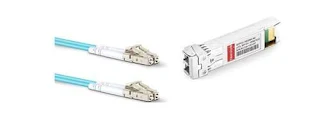Most us of us may quite familiar with 10G, 40G and 100G Ethernet network, but we know little about 25G Ethernet, or even never heard about it. In the race of 10G, 40G and 100G Ethernet, it seems that 25G Ethernet lagged far behind. However, it is a good choice for network connectivity indeed. So what is 25G Ethernet and its benefits? And what about its cables and optical modules? The detailed information about 25G Ethernet would be provided in this article.
Researched and developed by IEEE group, 25G Gigabit Ethernet is a standard for Ethernet connectivity. Compared with 10G, 40G and 100G Ethernet, 25G and 50G Ethernet were the latest developed Ethernet specification. 25G Ethernet Consortium was formed in July 2014 to support the specification of single-lane 25G Ethernet. It is an open organization to all third parties who wish to participate as members to enable the transmission of Ethernet frames at 25 or 50 Gigabit per seconds (Gbps) and to promote the standardization and improvement of the interfaces for applicable products.
Figure1: 25Gb/s SerDes Single Lane
For the configurations shown in Figure 1, 25Gb/s interfaces represent themselves as networking ports. They can auto-negotiate link speed by proprietary bit locations in extended capabilities registers.
- Technology
25G Ethernet technology is designed for application and infrastructure efficiency that results in a better data center ROI. - Robustness and reliability
The 25G Ethernet technology is robust and reliable, and the products of Ethernet 25G are deigned to the highest standards and built to last. Weakness in one area can cascade and cause challenges that impact the entire system design and limit product reliability. The consequences would be too ghastly to contemplate. - Performance
Industry analysts are predicting that 25GbE Ethernet will have the fastest adoption ramp ever for a new Ethernet technology. To make this forecast a reality requires not only 25 GbE technology that is both manufacturable and offers better features and capabilities, but also provides a true performance advantage. - Ease of adoption
The IEEE group and 25G Ethernet Consortium have worked hard to ensure that 25G Ethernet offers a seamless upgrade to 10G Ethernet environments, with backwards compatibility that use the same 10GbE LC fiber cabling that has already been deployed in the data center. - Price
Although 25GbE Ethernet is slightly more expensive than the 10GbE pricing, it still delivers a reasonable price. In fact the 25GbE pricing is very competitive, with only a 30% to 40% premium over 10GbE, and this premium is expected to come down over time. Overall, 25G Ethernet still offers a cost-effective solution for network connectivity.
In general, there are three kinds of SFP28 optics, 25G SFP28 AOC and DAC cables as well as 25G SFP28 transceivers.
Figure2: 25G SFP28 Active Optical Cable
Basically, there are two kinds of 25G SFP28 transceiver, 25G SFP28 SR and 25G SFP28 LR optical transceiver. The 25G SFP28 SR designed to transfer data over short distance while the 25G SFP28 LR transceiver set for long distance transmission. The maximum transmission length of 25G SFP28 SR is 100 m over 50μm multimode optical fiber. The transmission distance of 25G SFP28 LR optical transceiver can be up to 10 km over single-mode fiber. Both the transceivers can be applied to data center, 10G&25G Ethernet, high-speed storage area networks and in-rack connection.
Figure3: 25G SFP28 Transceiver
25G Ethernet is taking off fast. It has a handful of very powerful data center and cloud vendors and suppliers-Google, Microsoft, Broadcom, Arista, Mellanox and Cisco. The 25G technology already exists in 100G will drive better cost efficiencies than 40G as well, saving cloud providers and enterprise data centers capital and operating expense. FS.COM provides large and in-stock 25G SFP+ cables and 25G SFP SR transceiver with high quality but low cost. If you are interested with our products, please feel free to contact us.




Post a Comment